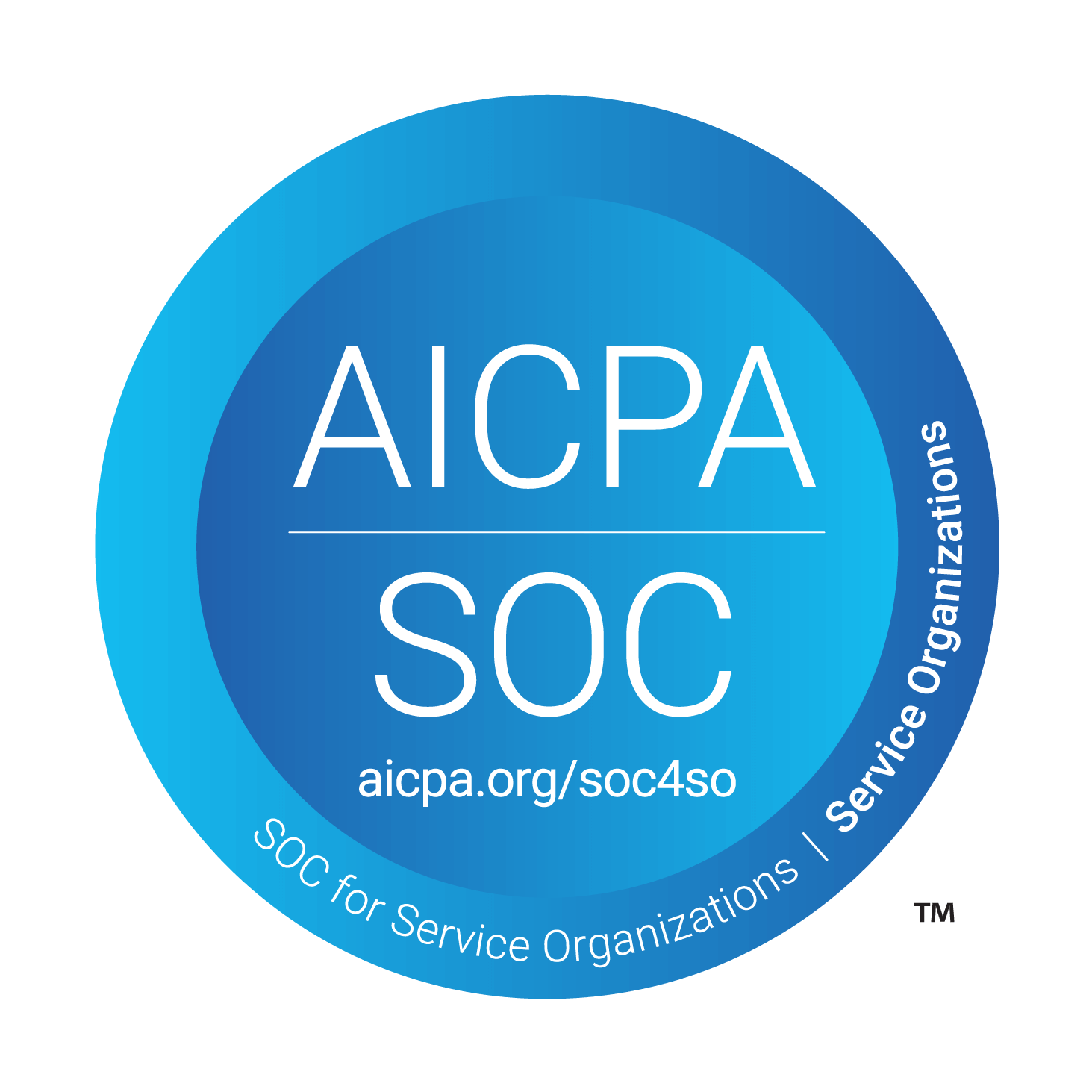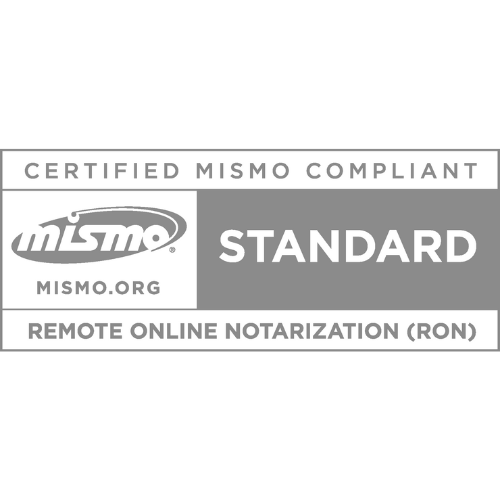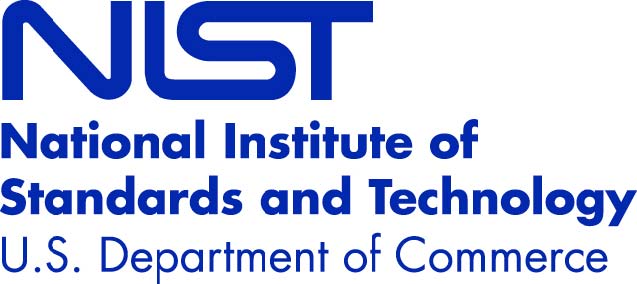Disclaimer: This blog post is for informational purposes only and does not constitute legal advice. Please consult an attorney for guidance on specific laws regarding Remote Online Notarization (RON), digital signatures, and related legal matters. As laws concerning RON and notarization are subject to frequent changes, it is advisable to verify current regulations with your local government.
You’ve likely seen it happen: a critical transaction—like a mortgage closing or investment authorization—gets delayed because someone still needs to locate a notary, coordinate schedules, and sign physical documents. It can slow down your process, increase overhead, and create friction in an otherwise streamlined digital workflow. Remote Online Notarization for Financial Services may offer a more efficient and secure alternative to these challenges associated with traditional notarizations.
Remote Online Notarization (otherwise known as RON) offers a modern solution. By enabling notarizations to take place entirely online through secure audio-visual platforms, RON can allow your institution to move faster, help reduce risk, and often provide a more convenient experience for clients—without sacrificing compliance or security.
In this article, we’ll break down how Remote Online Notarization for financial services works, why adoption is growing, and how your institution can benefit from bringing notarization into the digital era.
What is Remote Online Notarization (RON)?
Remote Online Notarization (RON) is a method that allows a commissioned notary public to verify a signer’s identity and witness their signature through a secure online platform. The entire process takes place over a live audio-visual connection, often through a purpose-built digital tool that complies with specific state regulations authorizing RON.
Rather than requiring an in-person meeting, an online notary may offer a virtual alternative—potentially streamlining document execution for financial institutions handling high-volume or time-sensitive transactions. Identity verification typically involves multi-factor methods such as credential analysis and knowledge-based authentication. Once verified, the signer applies an electronic signature, and the notary affixes a digital seal, creating a tamper-evident record that is securely stored.
RON is distinct from other alternatives like Remote Ink-Signed Notarization (RIN), where video technology can be used, but wet signatures are still involved. In contrast, RON allows the entire process to remain digital from start to finish, which may align with broader efforts to modernize financial operations and reduce friction in document workflows.
Why Traditional Notarization Falls Short in Finance
In today’s digital-first financial environment, traditional notarization processes may introduce avoidable friction. Coordinating schedules for in-person signings—between notaries, clients, and staff—can result in delays, particularly when time-sensitive transactions are involved.
The reliance on physical documents also adds operational complexity. Printing, scanning, mailing, and storing paper records can increase administrative burdens and may contribute to higher overhead costs. There is also a risk of documents being lost, misplaced, or damaged during transit or filing, potentially slowing down processing timelines.
For clients, travel requirements and time away from work to complete a simple notarization may feel inconvenient, especially in an era where digital banking and remote financial services are becoming the norm. Additionally, geographic limitations can complicate service delivery when clients are located across different cities or states.
While traditional notarization may be an acceptable option in some situations, for financial institutions seeking to streamline workflows and reduce friction, these constraints may be worth reevaluating.
The Rise of Remote Online Notarization for Financial Services
Remote Online Notarization (RON) is drawing increased interest within the financial services sector—including banks, lenders, and investment firms—largely due to its potential to reduce delays and align with evolving customer expectations. Financial transactions often operate under tight timelines, and traditional notarization processes may introduce avoidable bottlenecks.
By digitizing the notarization experience, an online notary may help streamline workflows, potentially shortening turnaround times for activities such as loan closings, investment authorizations, and account openings. Several regulatory and industry organizations, including the Mortgage Bankers Association (MBA), have expressed support for broader adoption of RON. Their advocacy underscores the industry’s interest in solutions that align with compliance requirements while addressing operational efficiency.
At the same time, customer expectations continue to shift. Clients increasingly manage finances through digital platforms and may prefer the convenience of online interactions—even for complex transactions. Offering RON as an option may help financial institutions meet those expectations while enhancing the overall client experience.
Potential Benefits of Remote Online Notarization (RON) for Financial Institutions
Implementing Remote Online Notarization (RON) may offer a range of operational and client-facing advantages for financial institutions. While specific outcomes can vary based on use case and implementation strategy, several key areas often stand out: enhanced customer experience, operational streamlining, and improved controls around compliance and security.
Client Accessibility and Experience
An online notary service may offer clients greater flexibility by allowing them to complete notarizations remotely, without the need to travel or coordinate in-person meetings. For clients who are located in different regions, have limited mobility, or maintain demanding schedules, this capability can support a more accessible and responsive service model.
The ability to complete time-sensitive transactions—such as account openings, loan finalizations, or investment authorizations—without geographic or logistical constraints may enhance the overall client experience. This approach aligns with the growing expectation for financial services to be delivered digitally and on-demand.
Operational Efficiency and Document Management
Financial institutions may realize efficiency gains by shifting notarization processes from paper-based to fully digital workflows. RON can reduce reliance on manual tasks such as printing, mailing, scanning, and physical document storage. This may contribute to lower overhead costs and quicker document turnaround—particularly useful for activities like wealth management onboarding, lending, or processing distributions.
Additionally, RON platforms often support multi-party signings and provide guided workflows, which can help simplify complex financial transactions and reduce administrative burden for internal teams.
Security and Compliance Support
RON platforms may enhance identity verification protocols beyond what is typically possible in person. Many providers incorporate knowledge-based authentication (KBA) and credential analysis technologies to help verify signers’ identities and detect potentially fraudulent documents.
The notarization session is recorded, creating a secure, time-stamped audio-visual record of the transaction. Digitally signed documents may also include tamper-evident seals and digital certificates, helping establish a stronger audit trail for compliance and dispute resolution purposes.
RON providers are generally required to comply with state-level RON laws and may also align with broader frameworks such as the ESIGN Act and UETA. Selecting a provider familiar with financial services regulations may support your institution’s risk management and due diligence efforts.
Scalability and Expanded Market Reach
Remote notarization may allow institutions to serve clients across wider geographic areas without requiring physical presence. Depending on interstate recognition rules and the applicable state laws, RON may facilitate transactions with clients located in different jurisdictions—supporting growth and broader market access.
Integrating RON into your service offering may also position your institution competitively, demonstrating a commitment to modernization and digital convenience. For clients seeking seamless, technology-driven solutions in financial services, this capability may contribute positively to brand perception and loyalty.
Common Use Cases for Remote Online Notarization (RON) in Financial Services
Remote Online Notarization (RON) offers flexibility that may support a wide range of notarization needs within the financial services industry. From lending to wealth management, the ability to complete notarizations digitally can contribute to more efficient workflows and an improved client experience. Below are several use cases where RON may be applicable:
Mortgage Closings
RON is increasingly used in real estate and mortgage transactions. By enabling remote execution of closing documents, RON may help reduce delays associated with coordinating in-person signings among buyers, sellers, and lenders—especially when parties are located in different geographic regions.
Loan Agreements
Various types of loans—including personal, business, and home equity products—may require notarized documentation. RON can offer a convenient way for borrowers to complete these steps on many required loan documents* without needing to visit a physical office, potentially supporting quicker turnaround times.
*please check with individual lenders as to promissory note requirements
Wealth Management Documentation
High-net-worth individuals often engage in transactions involving trusts, beneficiary updates, and new account openings. These actions may require notarized consent or verification. RON may help support client expectations for discretion and efficiency while providing a secure framework for document execution.
Retirement Plan Distributions and Rollovers
Processing certain retirement-related requests may involve notarized forms. On certain documents, RON can offer an alternative to mailing physical documents or visiting a notary in person, which may be especially helpful for clients who are retired or managing their finances remotely. The IRS has promulgated proposed regulations allowing for the use of RON with respect to certain 401K transactions.
Financial Power of Attorney (POA)
POA forms often grant significant authority and usually require notarization to be considered valid. RON may simplify execution for clients and their designated agents—particularly when they are in different locations or need to act quickly.
Affidavits and Sworn Statements
Financial institutions may collect affidavits for various purposes, such as identity verification, loan application support, or dispute resolution. RON allows these documents to be notarized with an auditable, digitally recorded process that may enhance legal reliability.
New Account Openings
In some cases, opening high-value or regulated accounts may require notarized documents to meet identity verification or compliance protocols. RON can be integrated into onboarding workflows to help minimize friction for clients.
Estate and Trust-Related Transactions
Transactions related to estate settlement or trust administration often require notarized signatures from executors, trustees, or beneficiaries. RON may help facilitate these steps in a timely and accessible manner, particularly when stakeholders are dispersed.
While adoption of RON will depend on the specific regulatory environment, institutional policy, and transaction type, these use cases illustrate where RON may contribute to more efficient processing, greater accessibility, and improved client satisfaction within financial services.
RON vs. Traditional Notarization: A Quick Comparison
Understanding the differences can highlight why RON is gaining traction, particularly in finance. Here’s a simple comparison:
| Feature | Traditional In-Person Notarization | Remote Online Notarization (RON) |
|---|---|---|
| Process | Physical meeting required; paper documents; wet ink signatures. | Online meeting via secure audio-visual platform; digital documents; electronic signatures and seal. |
| Location | Signer and notary must be physically present together. | Signer and notary can be in different locations; requires internet connection. |
| Time & Convenience | Requires travel, scheduling; often limited to business hours. | Can be done from anywhere, often 24/7; faster transaction completion. |
| Identity Verification | Manual ID check by notary; risk of fake IDs. | Multi-factor authentication (credential analysis through an algorithmic analysis, KBA) potentially stronger verification. |
| Security & Audit Trail | Physical journal entry; documents susceptible to tampering. | Secure digital documents (tamper-evident); full audio-visual recording; robust electronic audit trail; enhances fraud prevention. |
| Customer Experience | Can be inconvenient, slow, disjointed from digital flow. | Seamless, fast, convenient; aligns with digital expectations; provides a differentiated customer experience. |
| Cost Implications | Notary fees plus indirect costs (travel, time, delays). | Platform fees; potential for significant overall cost savings due to efficiency and speed. |
This comparison shows RON’s advantages in efficiency, security, and accessibility for many financial services scenarios.
Implementing Remote Online Notarization in Your Financial Business
For financial institutions exploring Remote Online Notarization (RON), a strategic and well-planned implementation may help align the technology with existing workflows while supporting compliance and operational efficiency. While outcomes can vary depending on an organization’s structure and objectives, several practical considerations may help guide the process.
It often begins with identifying where notarization requirements currently slow down operations or create friction for clients. Common areas may include mortgage closings, power of attorney forms, trust and estate documentation, retirement plan distributions, and new account onboarding. Prioritizing use cases that involve high transaction volumes or time-sensitive steps may help determine where RON can provide the most immediate value.
Selecting the right RON provider is also an important step. Institutions may want to consider platforms that offer strong identity verification methods—such as credential analysis and knowledge-based authentication—along with support across multiple states, secure document handling, and features like multi-party signing. Usability for both staff and clients, integration capabilities with existing systems, and responsive technical support may further support long-term success.
Staff training is another key consideration. Employees who support or manage notarization workflows should understand how RON works, what security measures are in place, and how to guide clients through the process. Developing internal procedures and documentation may help ensure consistent execution and a smooth transition from paper-based to digital notarization.
Integrating RON platforms with your institution’s core technology systems—when possible—can streamline operations by reducing manual tasks and improving turnaround times. Legal and compliance teams should be involved early in the planning process to ensure all RON procedures meet applicable state laws and align with internal policies related to notarized financial documents.
Once the system is in place, institutions may consider communicating the availability of RON to clients. Presenting it as an option that enhances convenience and maintains secure standards may help encourage adoption and position the institution as digitally forward-thinking in its service delivery.
Selecting a RON Vendor: What Financial Institutions Should Evaluate
When considering a Remote Online Notarization (RON) solution, financial institutions may benefit from a structured evaluation process. RON vendors vary widely in capabilities, and selecting a platform that aligns with institutional needs, compliance frameworks, and operational structures can support more effective implementation.
If your institution operates across multiple jurisdictions, it may be useful to confirm whether the platform is structured to accommodate varying legal requirements, including those set forth by the ESIGN Act, UETA, and relevant state RON statutes.
Security features are another key area for consideration. Since RON platforms often handle sensitive financial and personal information, evaluating encryption protocols, data storage practices, audio-visual recording retention, and audit trail capabilities can help determine whether the platform aligns with internal risk management expectations. Understanding where data is stored, how long it is retained, and what controls are in place may be essential from a compliance and IT governance standpoint.
User experience also plays a role—both for clients and staff. Platforms that are easier to navigate may reduce friction and improve adoption. Institutions may want to look for customizable interfaces, or ADA accessibility features, especially if they serve a diverse or remote customer base. Testing the customer-facing experience in a demo environment can help identify potential usability concerns before adoption.
Integration flexibility may be important for institutions already invested in digital tools. Assessing whether the platform can connect via API. Institutions may also evaluate whether the platform can adapt to future technology changes.
Functionality for multi-party transactions—such as those involving co-signers, guarantors, or external counsel—may be a relevant factor depending on the complexity of your use cases. Institutions might assess whether the platform supports simultaneous or sequential signings, document version control, and real-time status updates.
Lastly, it may be helpful to review the vendor’s onboarding, support, and financial industry experience. While some platforms are built with general consumers in mind, others may offer service models tailored to enterprise needs. Financial institutions may consider asking about training materials, support availability, and experience working with similar organizations.
Thorough due diligence during the vendor selection process may help reduce implementation risks and ensure the solution aligns with internal objectives, legal standards, and client expectations.
Case Study: Exploring Remote Online Notarization in a Mid-Sized Regional Bank
A mid-sized regional bank operating across three states began exploring Remote Online Notarization (RON) to address delays in mortgage closings and wealth management transactions. Clients often faced scheduling challenges for in-person notarizations, and staff were burdened with scanning, mailing, and storing physical documents.
After evaluating several RON providers, the bank selected a platform that supported multi-party signings, integrated with their loan origination system, and met state-specific compliance requirements.
A phased pilot focused on mortgage refinances and beneficiary updates showed faster turnaround times and fewer document handling issues. While not every client used RON, those who did appreciated the flexibility. Based on the early results, the bank expanded RON to other departments, continuing to consult with legal and compliance teams to ensure regulatory alignment.
Conclusion
Remote Online Notarization represents a meaningful step forward in the evolution of financial document execution. As client expectations shift toward seamless digital experiences and institutions continue to seek efficiency across operations, RON may offer a flexible, secure, and scalable option for modernizing notarization practices. While not every use case or jurisdiction will support a full transition, RON has demonstrated the potential to streamline critical workflows, reduce operational friction, and support compliance in an increasingly remote-first environment.
For financial institutions evaluating how to integrate RON into their service model, the opportunity lies in identifying where the technology aligns best with client needs, operational priorities, and regulatory requirements. With thoughtful implementation and the right partner, RON can become a valuable component of a broader digital transformation strategy—enhancing both the client experience and internal efficiency.
Frequently Asked Questions About Remote Online Notarization for Financial Services
Is Remote Online Notarization (RON) legally accepted in all states?
RON is authorized in many U.S. states, but laws vary significantly. Some states permit RON for all notarial acts, while others have limited or no legislation in place. Additionally, acceptance of RON-executed documents may depend on the receiving party’s internal policies, so financial institutions should confirm both state laws and stakeholder requirements before proceeding.
What types of financial transactions can potentially use RON?
Common use cases for RON in financial services may include mortgage closings, loan modifications, wealth management documentation, retirement plan forms, and power of attorney agreements. The suitability of RON depends on the nature of the transaction, the parties involved, and applicable legal and compliance requirements.
How is identity verified during a RON session?
RON platforms typically use multi-factor identity verification, which may include knowledge-based authentication (KBA) and credential analysis of government-issued IDs. These steps are designed to meet or exceed state-specific requirements and help mitigate fraud risks, especially in high-value or sensitive financial transactions.
What should financial institutions consider when selecting a RON provider?
Institutions may want to evaluate vendors based on coverage across jurisdictions, identity verification methods, data security standards, platform usability, and integration capabilities. Experience with financial services and support for multi-party transactions may also be important depending on the complexity of your operations.
Does RON eliminate the need for in-person notarization entirely?
Not necessarily. While RON can serve as a digital alternative for many transactions, there may still be scenarios—due to legal restrictions, institutional policy, or client preference—where traditional in-person notarization is required. RON is best viewed as a complementary option within a broader notarization strategy.







 Your Privacy Choices
Your Privacy Choices


